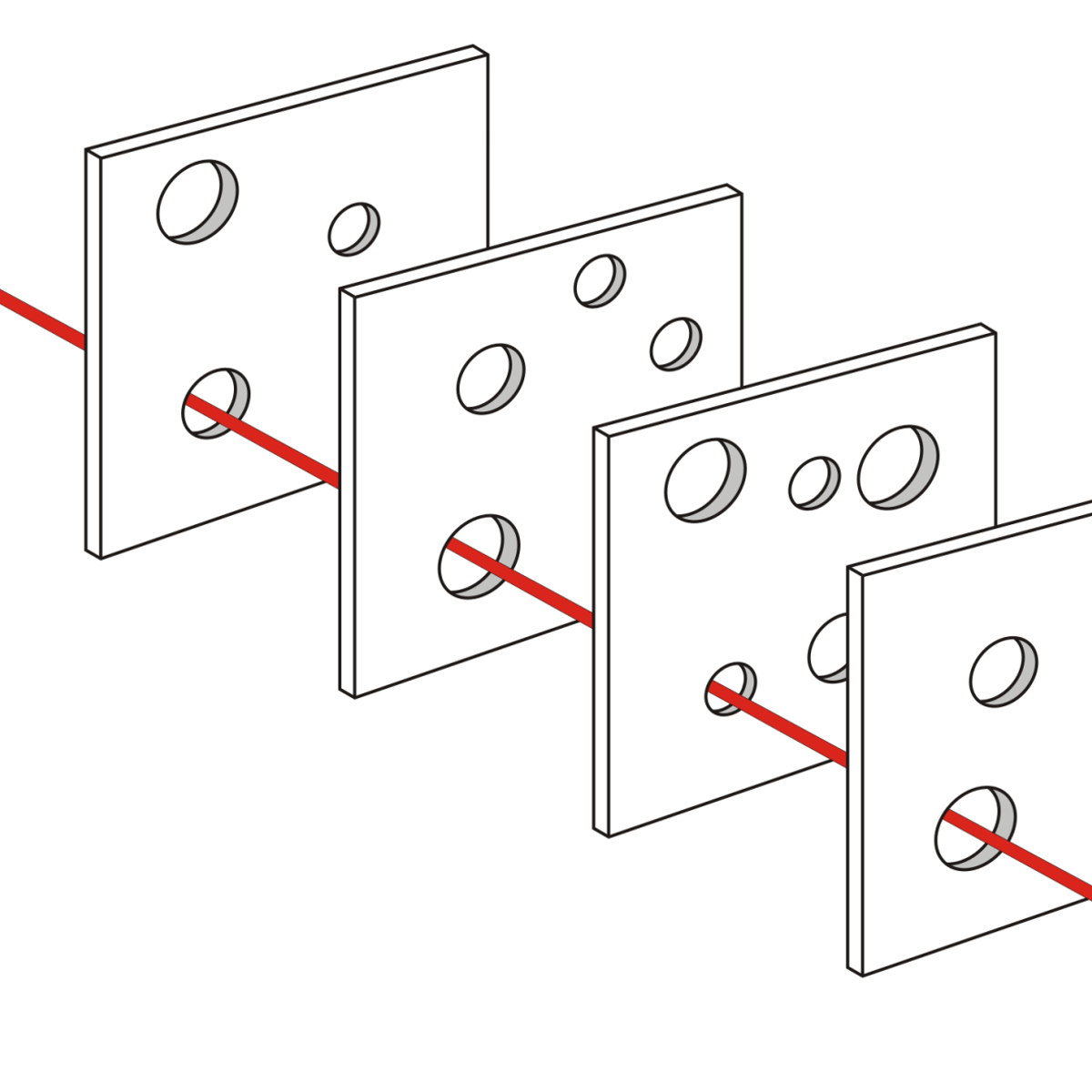It’s fair to say that in any pre-hospital setting, there are those factors that are both within – and beyond – our control – just as in life. These factors can often contribute to rates of injury, how well those injuries are managed, and what the health outcomes are. And that’s why every time we work as Event medics, we are looking at ways to minimise injury and maximise control of patient/athlete outcomes. That means we want to take ownership of as many factors as we can. In other words, we are all subconsciously trying to stop the holes in the Swiss cheese slices lining up…
You see the Swiss cheese model is psychologist, James Reason’s, insight into how accidents occur in complex systems, with multiple working parts. These parts can be humans, equipment, timings, weather, virtually any influential factor. Each component (or the safety mechanism for that component) is represented by a slice of Swiss cheese. His rationale was that accidents can occur when just one hole of all the Swiss cheese slices line up. In our world, as healthcare professionals, each slice of Swiss cheese may, for example, represent a safety mechanism or a human or process that acts as a barrier to prevent an accident happening. As the image below shows, the hazard i.e. injury outcome, gets through all barriers and induces loss i.e. poor health outcome.
 Here’s a simple real-world example: You are crossing the road and don’t want to get hit by a car. The Swiss cheese slices here include: your education on how to cross the road safely; the change in the pavement as you approach the crossing to highlight an area of change i.e. you’ve found road; the traffic light both flash and beeps; and of course, the traffic light also gives you a count-down when you’re crossing the road – basically is a signal to hurry up (and, I must say it’s never long enough). Conversely, the driver of the car is open to similar slices of Swiss cheese. And while pedestrian versus driver accidents do still happen, the rates are reduced by these steps which act to mitigate the risk.
Here’s a simple real-world example: You are crossing the road and don’t want to get hit by a car. The Swiss cheese slices here include: your education on how to cross the road safely; the change in the pavement as you approach the crossing to highlight an area of change i.e. you’ve found road; the traffic light both flash and beeps; and of course, the traffic light also gives you a count-down when you’re crossing the road – basically is a signal to hurry up (and, I must say it’s never long enough). Conversely, the driver of the car is open to similar slices of Swiss cheese. And while pedestrian versus driver accidents do still happen, the rates are reduced by these steps which act to mitigate the risk.
Now what’s interesting about our Swiss cheese model is there’s no discrimination between how the failure in defence actually occurred. And that is in part, along with its simplicity, why it is sometimes criticised. After-all, it could be a simple accident as you misjudged your timing, or it could be reckless behaviour as the driver tried to jump the red light. The list goes on; deliberate malice, omissions by neglect, misguided decisions, poor judgement, mechanical failure and so on. The purpose of our Swiss cheese mind-set is not to judge and assign blame but rather to be analytical in our thinking, preparation and execution. To ask ourselves, how can this go very wrong?
Which brings me full circle, back to us, as Event medics. We are all about Swiss cheese. We arrive as a team, each bringing our own skill set that has been tested and accredited. We then understand our working environment – the geography, access to areas, and resources. We then become familiar with the equipment we will be using and test that it works, and plan care pathways for various scenarios including athlete extraction. Finally, before the live event begins, we perform moulages repeatedly so that we can be as autonomous as possible with the processes,thereby allowing our brains to work through any issue critically, undistracted. All of these are individual slices of Swiss cheese, all with their cheesy holes in different places, meaning that chances of a medical error are reduced each and every time.
And that’s just the beginning of the Event medics Swiss cheese model! Everything we do is a slice of delicious cheese – bonding as a team, and individual and team growth in confidence, experience and knowledge. This means when an event accident or injury does occur (and remember, that’s more related to the athlete’s Swiss cheese model which is largely out of your control), you and your team can then ensure that the execution of medical care is floorless with no holes aligned.
Besides, who doesn’t love cheese.
Written by Dr Nick Knight
GP with an Interest in Sports and Exercise Medicine

For Medics
Why every Event Medic needs to have a Swiss Cheese Mind-set – By Nick Knight

© 2025 SportsMedicsLtd
